Mechanical and Wear Properties of Al/TiC Composites Fabricated via Combined Compo-Casting and APB Process
Abstract
1. Introduction
2. Experimental Procedure
2.1. Materials Processing
2.2. Fabrication of Cast Composites
2.3. Accumulative Press Bonding (APB) Process
3. Results
3.1. Tensile Strength
3.2. Hardness Test
3.3. Wear Test
3.4. Worn Surface Morphology
3.5. Fractography
4. Conclusions
- Uniform scattering of TiC particles in the Al matrix released by the scanning electron microscopy. The strength, tensile toughness and wear resistance of composites were enhanced due to the presence of additive TiC particles.
- The maximum UTS value of samples reaches a maximum value of 157 MPa after the 8th step, which is about two times more than that of annealed Al.
- The maximum elongation of the annealed Al is 25.2%, which drops to 2.05% for the sample with two steps. Then, after a certain number of steps, it improves to 7.6% after the 8th step, which reveals that the titanium carbide can have an improving role on the elongation value.
- The tensile toughness of the annealed Al is 19.2 j.m−3 × 104 which drops to 2.1 j.m−3 × 104 for the sample with two APB steps, and then it increases to 8.43 j.m−3 × 104 for the eighth-stepped sample. In other words, the titanium carbide particles can improve the tensile toughness of composites with more steps.
- The hardness value improves with the APB steps due to the presence of the reinforcement phase.
- The results revealed that the composites with TiC particulates have a better wear resistance compared to annealed base aluminum 1100 alloy.
Author Contributions
Funding
Institutional Review Board Statement
Informed Consent Statement
Data Availability Statement
Acknowledgments
Conflicts of Interest
References
- Jamaati, R.; Toroghinejad, M.R. Manufacturing of High-Strength Aluminum/Alumina Composite by Accumulative Roll Bonding. Mater. Sci. Eng. A 2010, 527, 4146–4151. [Google Scholar] [CrossRef]
- Amirkhanlou, S.; Jamaati, R.; Niroumand, B.; Toroghinejad, M.R. Using ARB Process as A Solution for Dilemma of Si and Sic P Distribution in Cast Al–Si/Sic P Composites. J. Mater. Process. Technol. 2011, 211, 1159–1165. [Google Scholar] [CrossRef]
- Vini, M.H.; Sedighi, M.; Mondali, M. Mechanical Properties, Bond Strength and Microstructural Evolution of AA1060/TiO2 Composites Fabricated by Warm Accumulative Roll Bonding (WARB). J. Mater. Res. 2017, 108, 53–59. [Google Scholar] [CrossRef]
- Saito, Y.; Utsunomiya, Y.; Tsuji, N. Novel Ultra-High Straining Process for Bulk Materials—Development of The Accumulative Roll-Bonding (ARB) Process. Acta Mater. 1999, 47, 579–583. [Google Scholar] [CrossRef]
- Korbel, A.; Richert, M.; Richert, J. The Effects of Very High Cumulative Deformation on Structure and Mechanical Properties of Aluminium. In Proceedings of the Second RISO International Symposium on Metallurgy and Material Science, Roskilde, Denmark, 14–18 September 1981; pp. 14–18. [Google Scholar]
- Liu, C.Y.; Wang, Q.; Jia, Y.Z.; Zhang, B.; Jing, R.; Ma, M.Z.; Jing, Q.; Liu, R.P. Effect of W Particles on the Properties of Accumulatively Roll-Bonded Al/W Composites. Mater. Sci. Eng. A 2012, 547, 120–124. [Google Scholar] [CrossRef]
- Vini, M.H.; Daneshmand, S. Bonding evolution of bimetallic Al/Cu laminates fabricated by asymmetric roll bonding. Adv. Mater. Res. 2019, 8, 1–10. [Google Scholar]
- Lu, C.; Tieu, K.; Wexler, D. Significant Enhancement of Bond Strength in the Accumulative Roll Bonding Process Using Nano-Sized Sio2 Particles. J. Mater. Process. Technol. 2009, 209, 4830–4834. [Google Scholar] [CrossRef]
- Alizadeh, M. Comparison of Nanostructured Al/B4C Composite Produced by ARB and Al/B4C Composite Produced by RRB Process. Mater. Sci. Eng. A 2010, 528, 578–582. [Google Scholar] [CrossRef]
- Vini, M.H.; Daneshmand, S. Fabrication of bimetal aluminum-5% alumina-bromine composites by warm accumulative roll bonding. J. Test. Eval. 2020, 49, 2757–2766. [Google Scholar] [CrossRef]
- Ipek, R. Adhesive Wear Behaviour of B4C and Sic Reinforced 4147 Al Matrix Composites (Al/B4C-Al/SiC). J. Mater. Process. Technol. 2005, 162–163, 71–75. [Google Scholar] [CrossRef]
- Farhadipour, P.; Sedighi, M.; Heydari, M. Using Warm Accumulative Roll Bonding Method to Produce Al-Al2O3, Proceedings of the Institution of Mechanical Engineers Part B. J. Eng. Manuf. 2017, 231, 889–896. [Google Scholar] [CrossRef]
- Sedighi, M.; Vini, M.H.; Farhadipour, P. Effect of Alumina Content On the Mechanical Properties of AA5083/Al2O3 Composites Fabricated by Warm Accumulative Roll Bondingm. Powder Metall. Met. Ceram. 2016, 55, 413–418. [Google Scholar] [CrossRef]
- Su, L.; Lu, C.; Li, H.; Deng, G.; Tieu, K. Investigation of Ultrafine Grained AA1050 Fabricated by Accumulative Roll Bonding. Mater. Sci. Eng. A 2014, 614, 148–155. [Google Scholar] [CrossRef]
- Jamaati, R.; Toroghinejad, M.R.; Dutkiewicz, J.; Szpunar, J.A. Investigation of Nanostructured Al/Al2O3 Composite Produced by Accumulative Roll Bonding Process. Mater. Des. 2012, 35, 37–42. [Google Scholar] [CrossRef]
- Vini, M.H.; Daneshmand, S. Effect of TiO2 particles on the mechanical, bonding properties and microstructural evolution of AA1060/TiO2 composites fabricated by WARB. Surf. Rev. Lett. 2020, 9, 99–107. [Google Scholar]

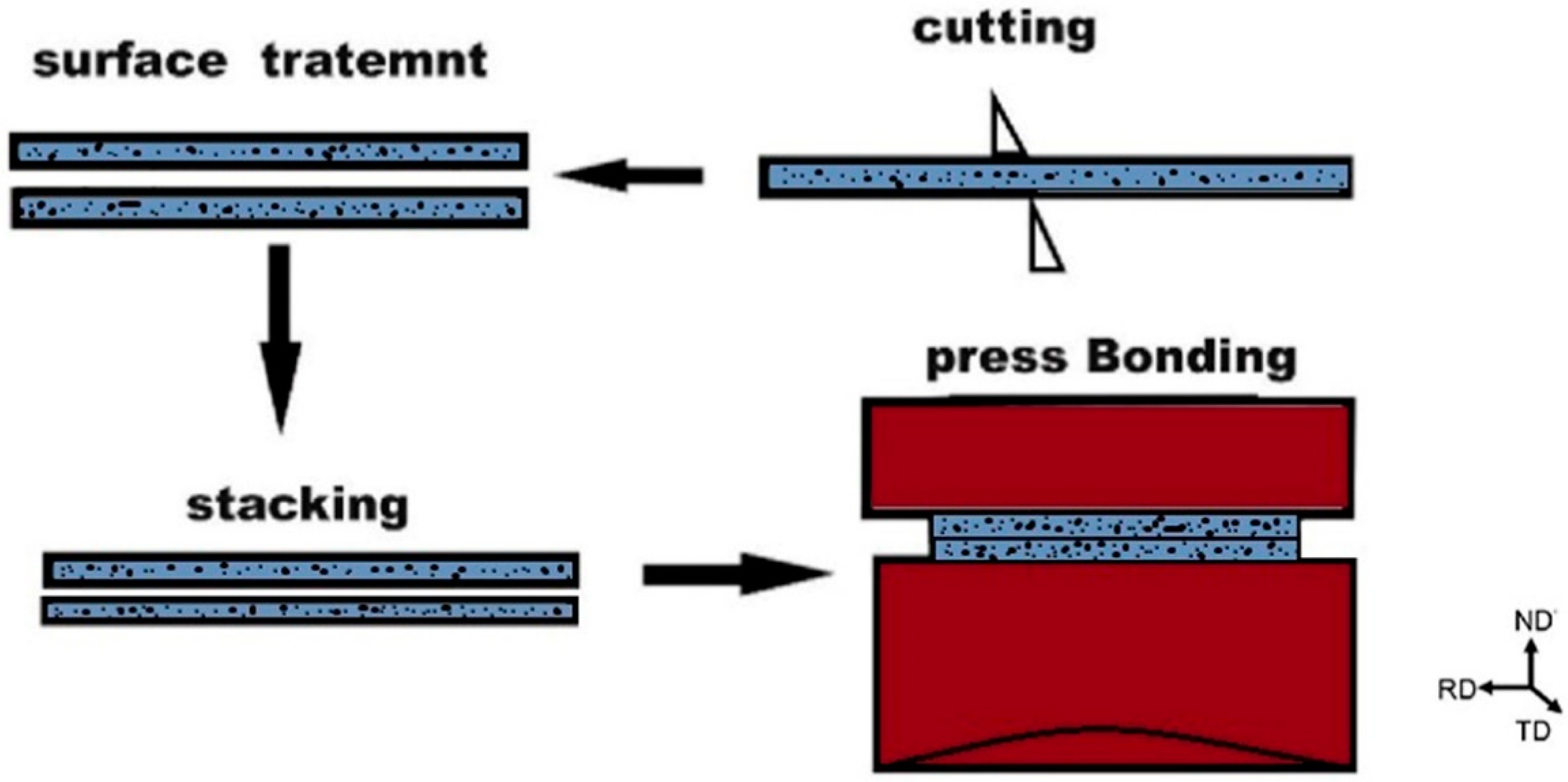
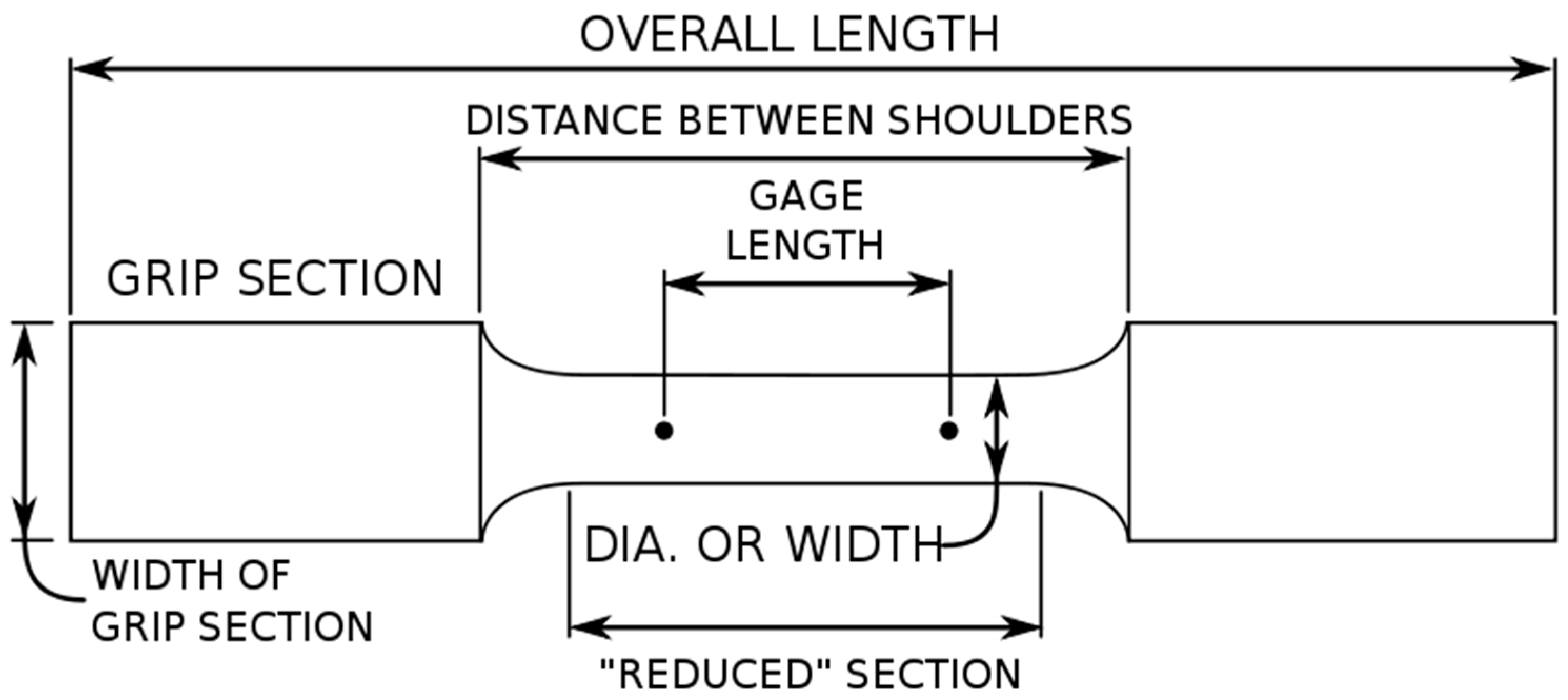
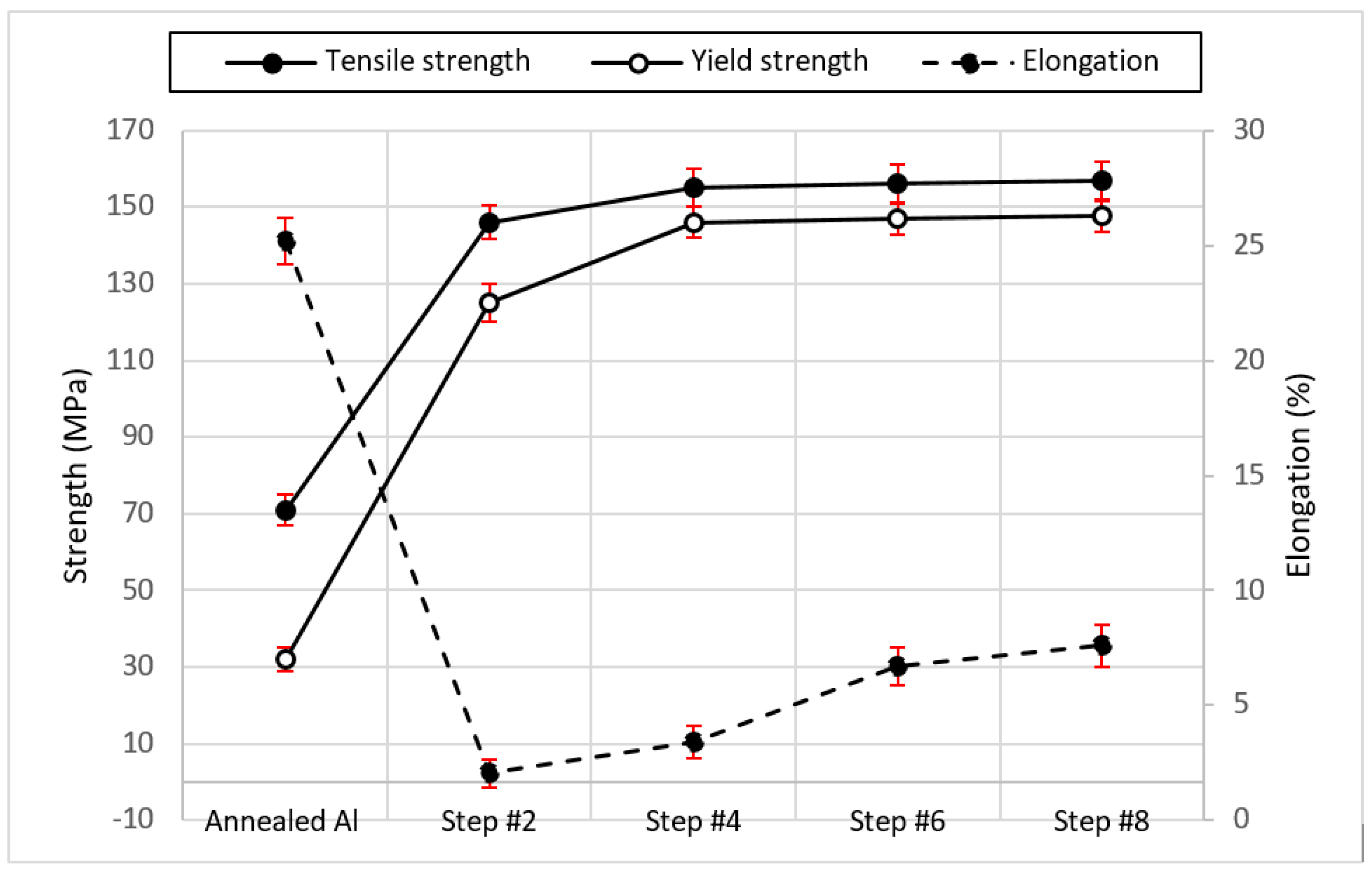
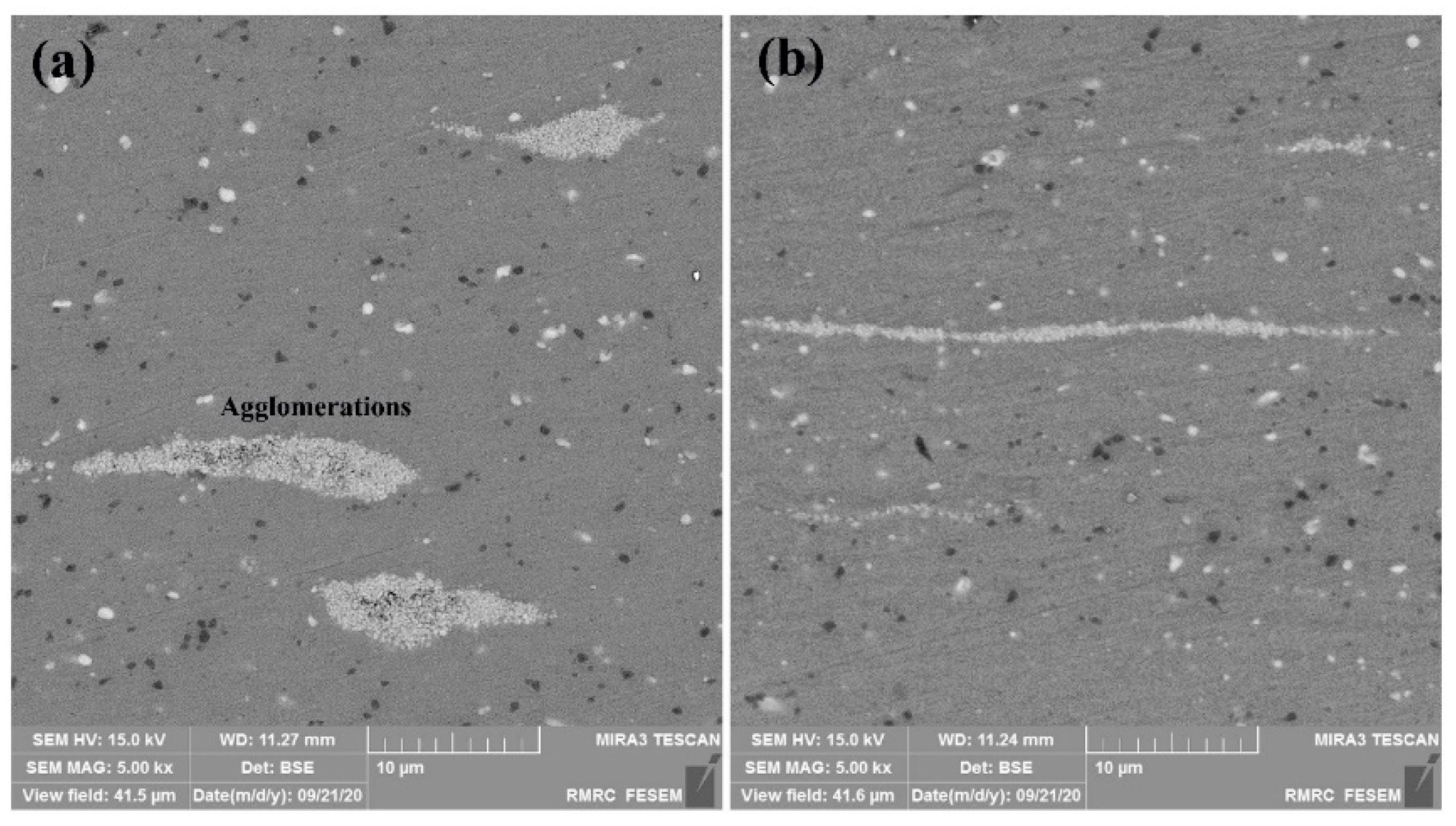
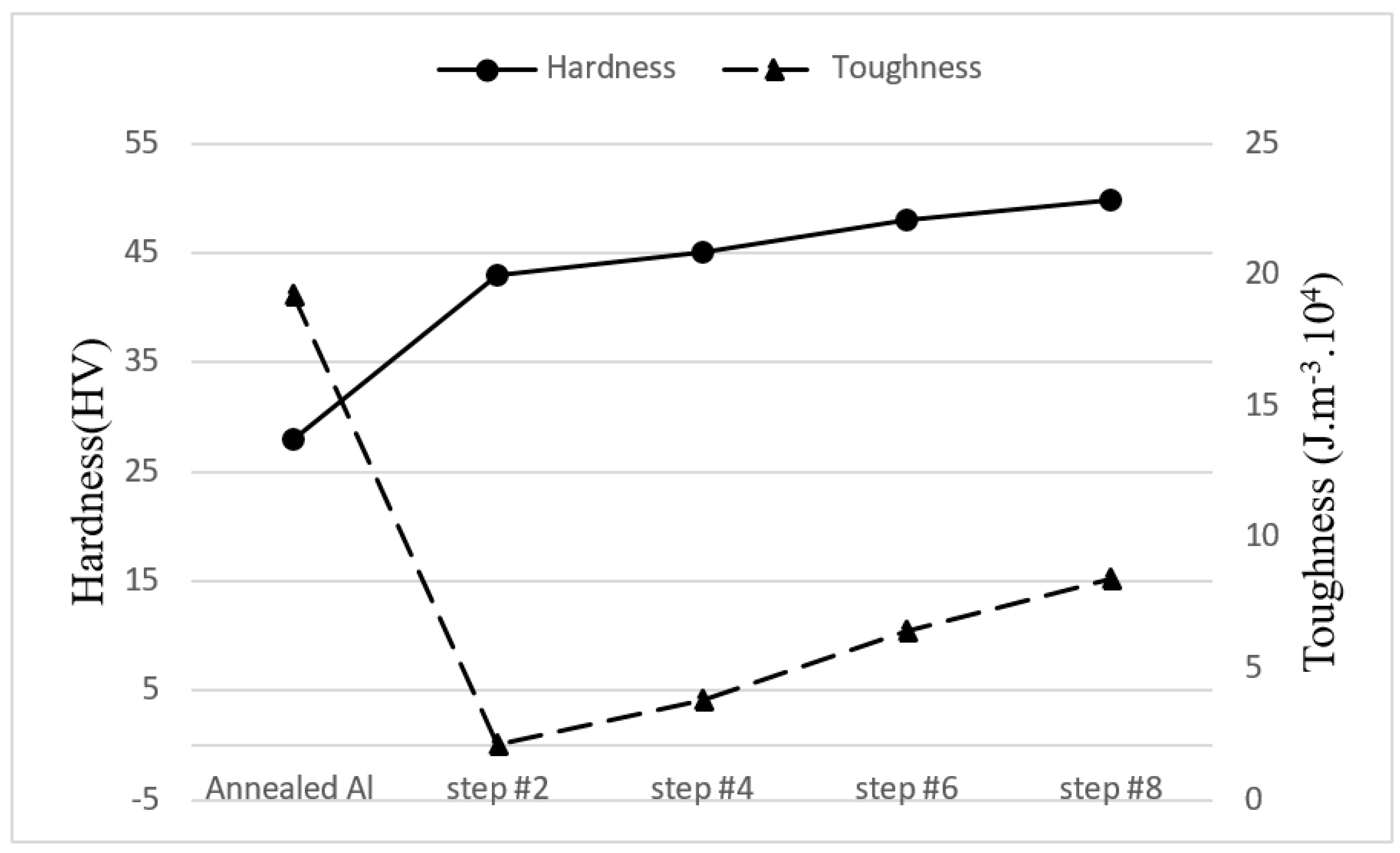
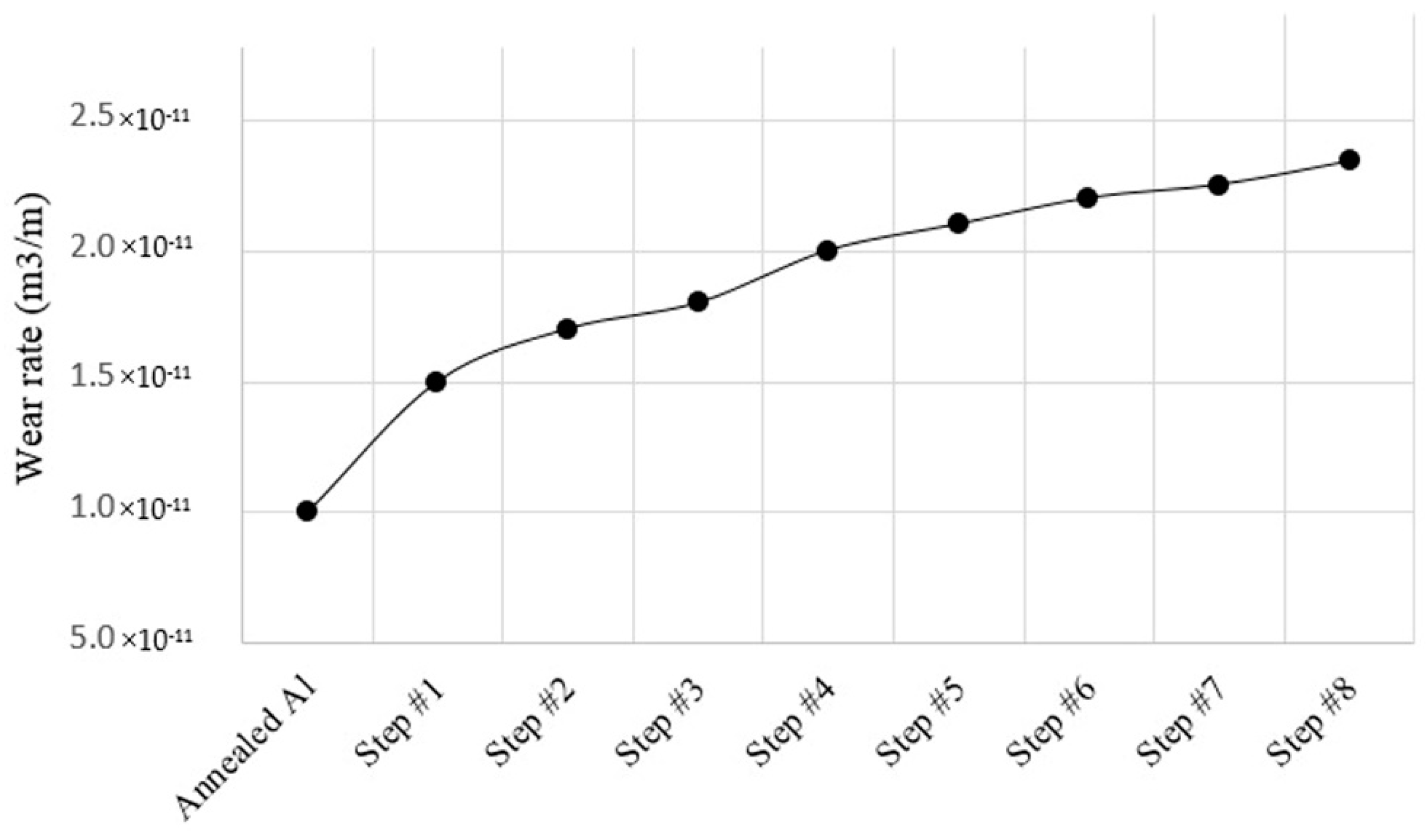

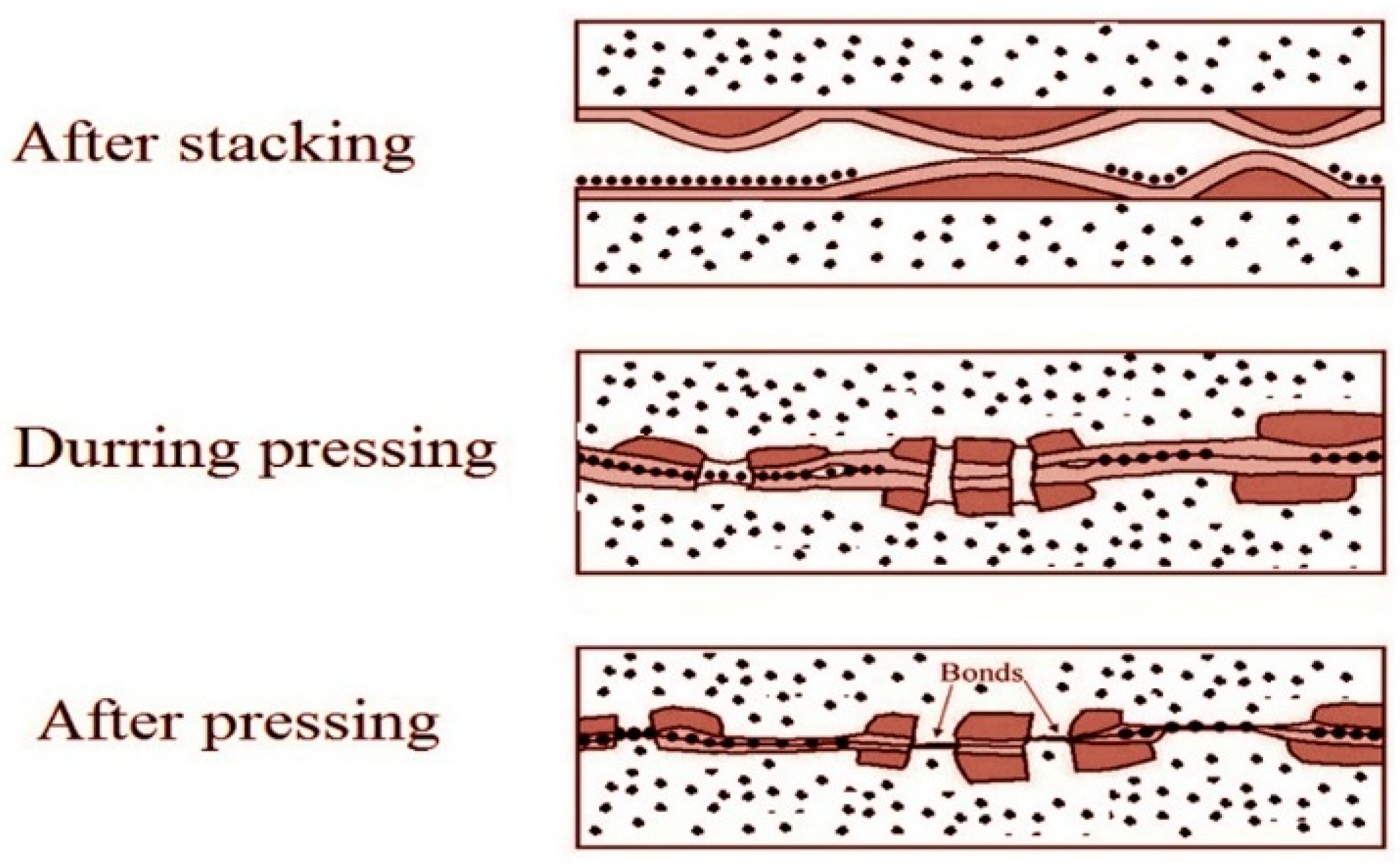
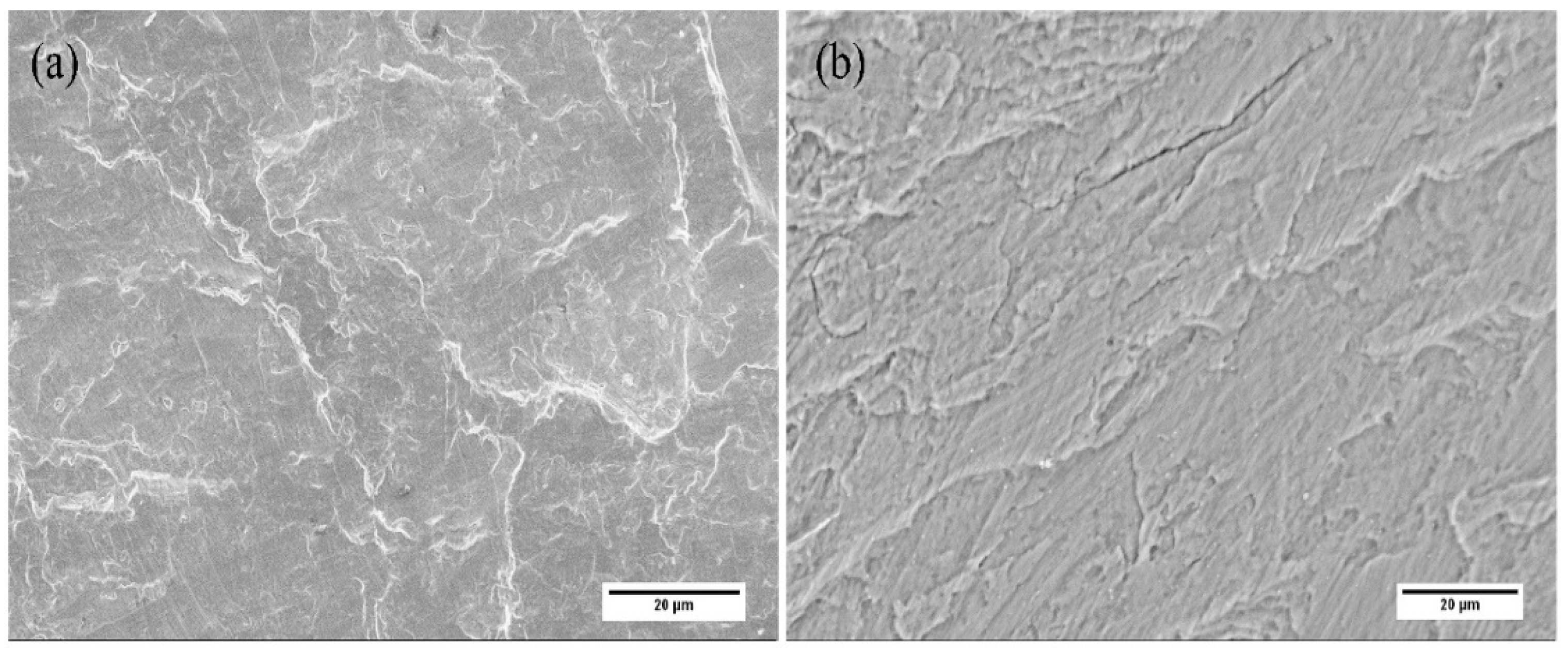
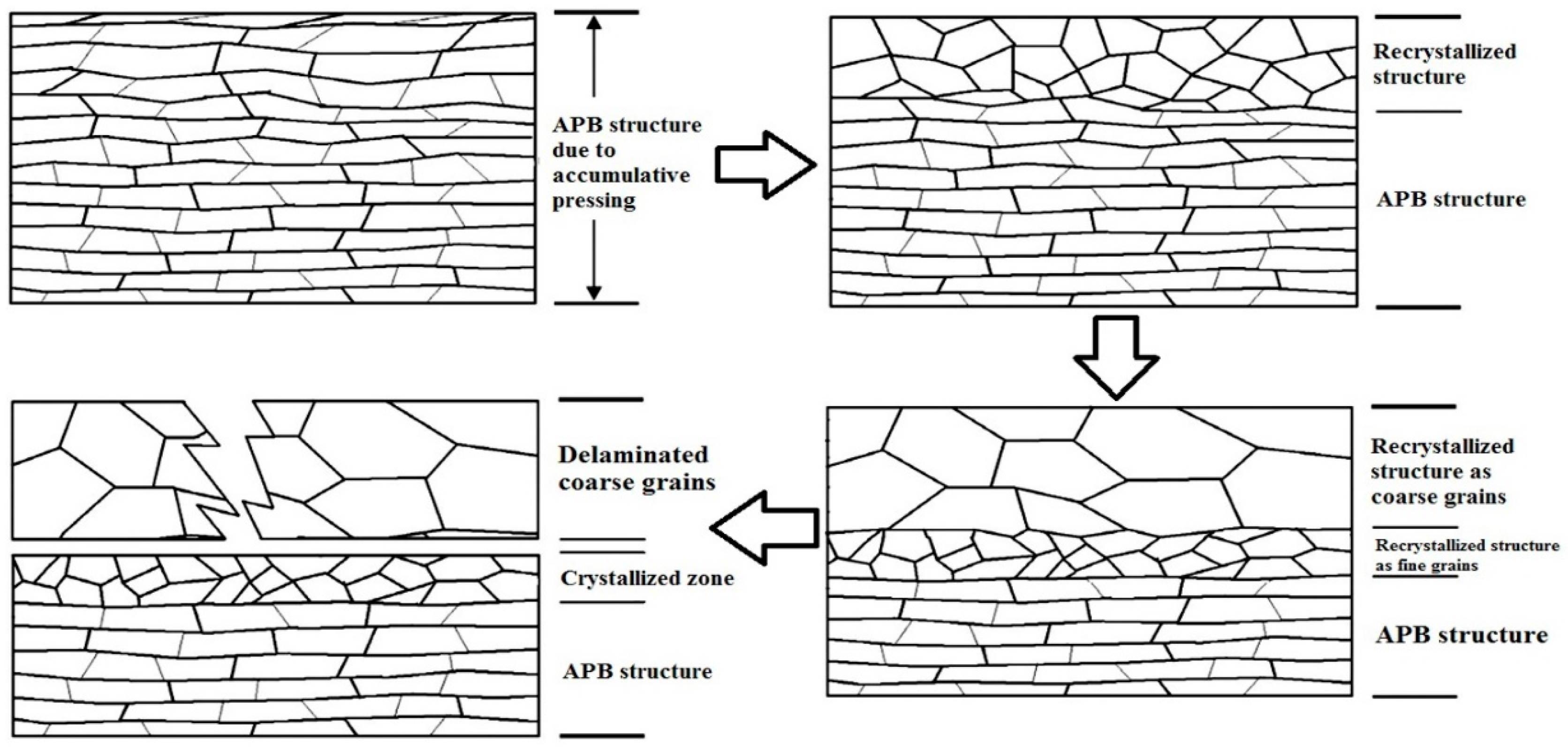
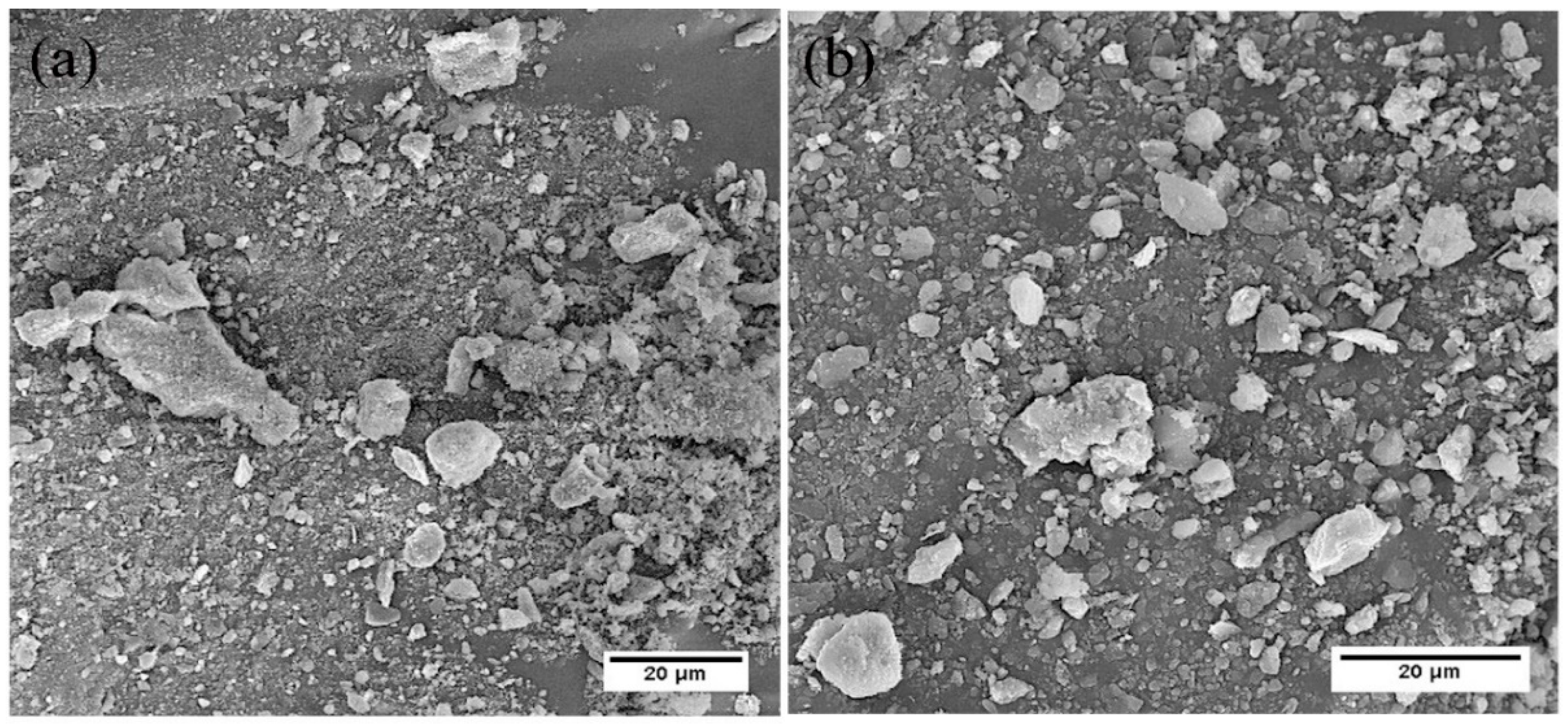
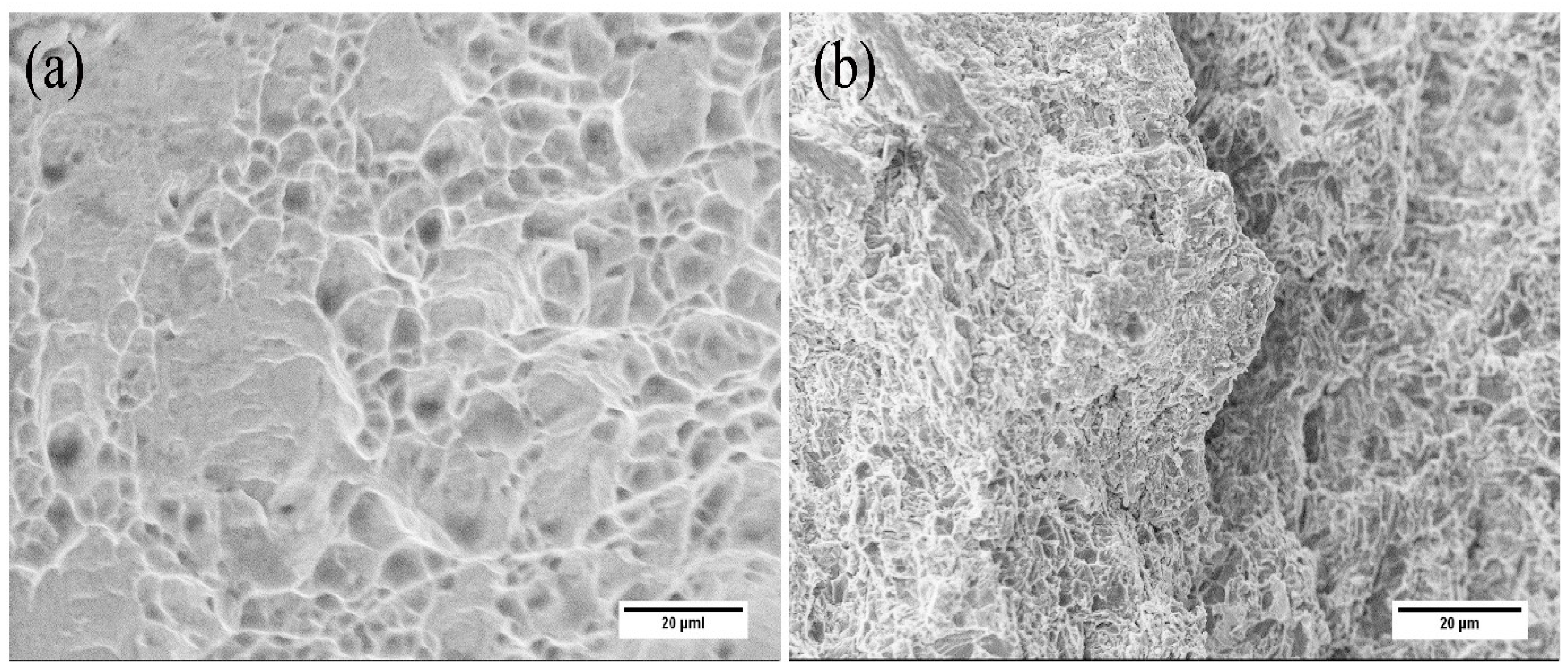
| Element. | Al | Si | Mn | Fe | Mg | Zn | Cu |
|---|---|---|---|---|---|---|---|
| Wt. % | Balance | 0.295 | 0.04 | 0.61 | 0.019 | 0.11 | 0.101 |
| APB Steps | Pressing Temperature (°C) | No. of Al-layers | Reduction in Each Cycle (%) | The Al-Layers Thickness (µm) | Total Thickness Reduction (%) | |
|---|---|---|---|---|---|---|
| 1 | 300 | 4 | 50 | 5000 | 50 | 0.8 |
| 2 | 300 | 8 | 50 | 2500 | 75 | 1.6 |
| 3 | 300 | 16 | 50 | 1250 | 87.5 | 2.4 |
| 4 | 300 | 32 | 50 | 625 | 93.75 | 3.2 |
| 5 | 300 | 64 | 50 | 312.5 | 96.87 | 4 |
| 6 | 300 | 128 | 50 | 156.25 | 98.43 | 4.8 |
| 7 | 300 | 256 | 50 | 78.127 | 99.21 | 5.6 |
| 8 | 300 | 512 | 50 | 39.06 | 99.6 | 6.4 |
Publisher’s Note: MDPI stays neutral with regard to jurisdictional claims in published maps and institutional affiliations. |
© 2022 by the authors. Licensee MDPI, Basel, Switzerland. This article is an open access article distributed under the terms and conditions of the Creative Commons Attribution (CC BY) license (https://creativecommons.org/licenses/by/4.0/).
Share and Cite
Wang, W.; Heydari Vini, M.; Daneshmand, S. Mechanical and Wear Properties of Al/TiC Composites Fabricated via Combined Compo-Casting and APB Process. Crystals 2022, 12, 1440. https://doi.org/10.3390/cryst12101440
Wang W, Heydari Vini M, Daneshmand S. Mechanical and Wear Properties of Al/TiC Composites Fabricated via Combined Compo-Casting and APB Process. Crystals. 2022; 12(10):1440. https://doi.org/10.3390/cryst12101440
Chicago/Turabian StyleWang, Weining, Mohammad Heydari Vini, and Saeed Daneshmand. 2022. "Mechanical and Wear Properties of Al/TiC Composites Fabricated via Combined Compo-Casting and APB Process" Crystals 12, no. 10: 1440. https://doi.org/10.3390/cryst12101440
APA StyleWang, W., Heydari Vini, M., & Daneshmand, S. (2022). Mechanical and Wear Properties of Al/TiC Composites Fabricated via Combined Compo-Casting and APB Process. Crystals, 12(10), 1440. https://doi.org/10.3390/cryst12101440





